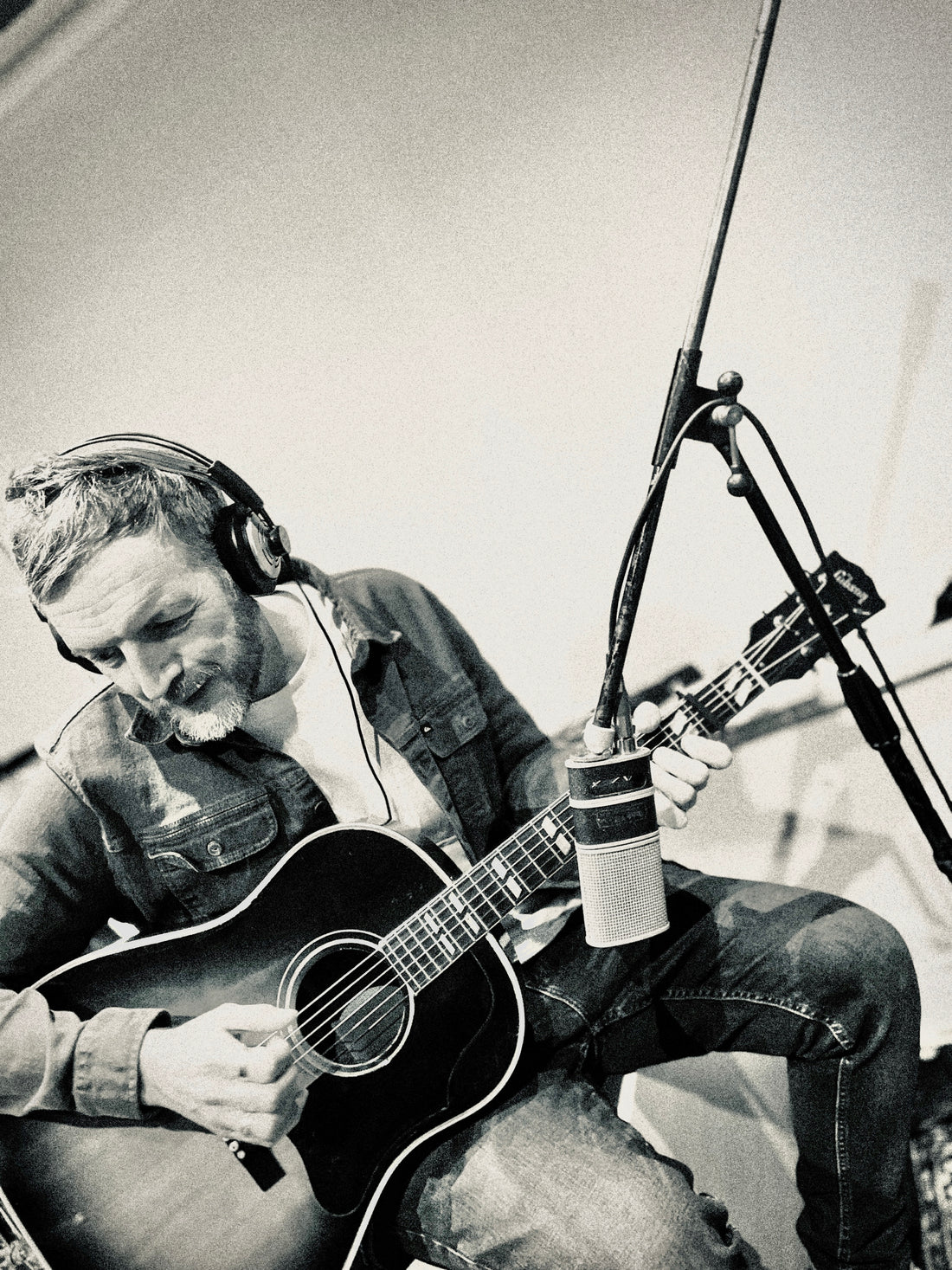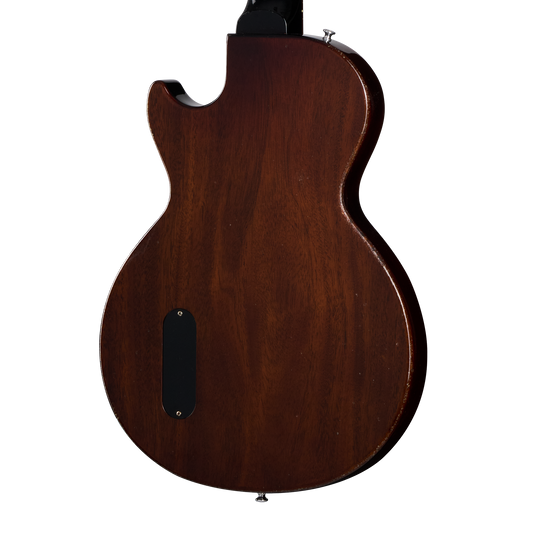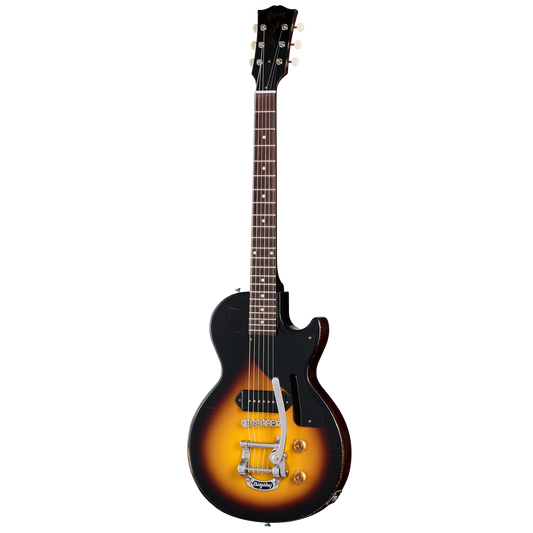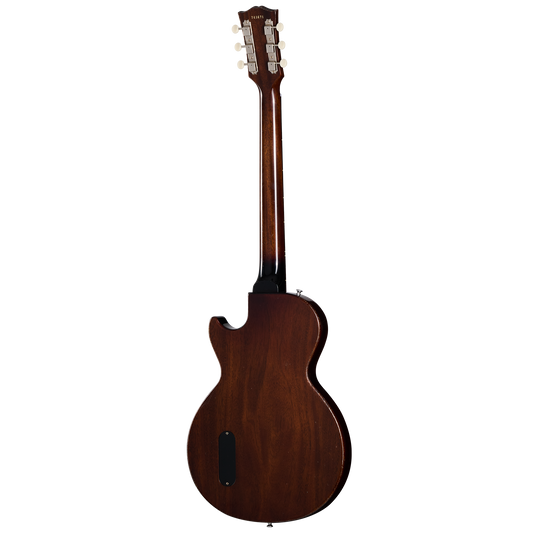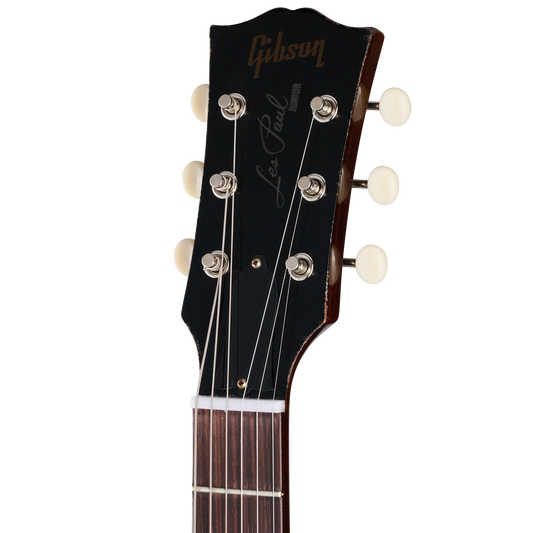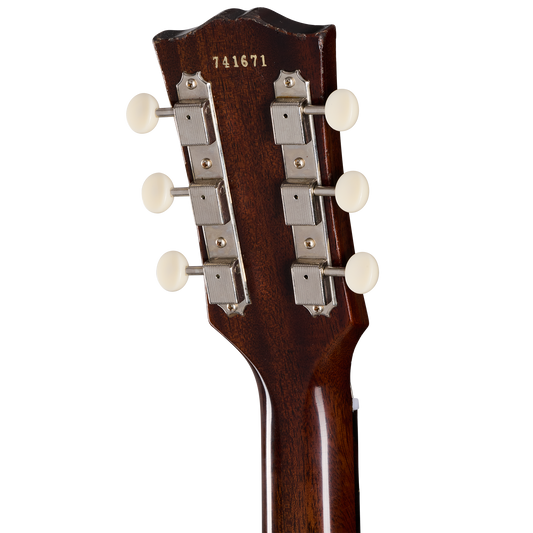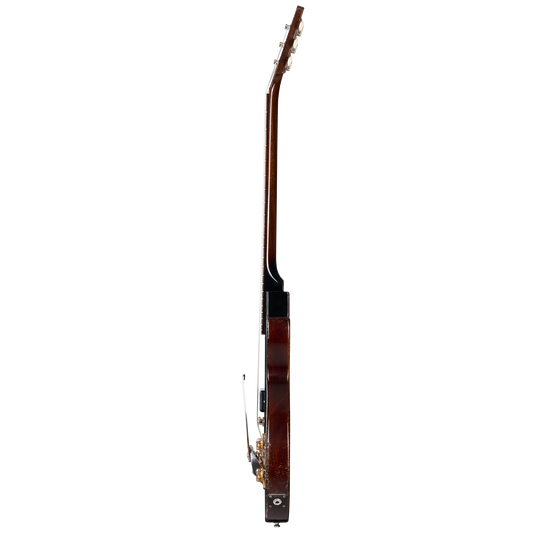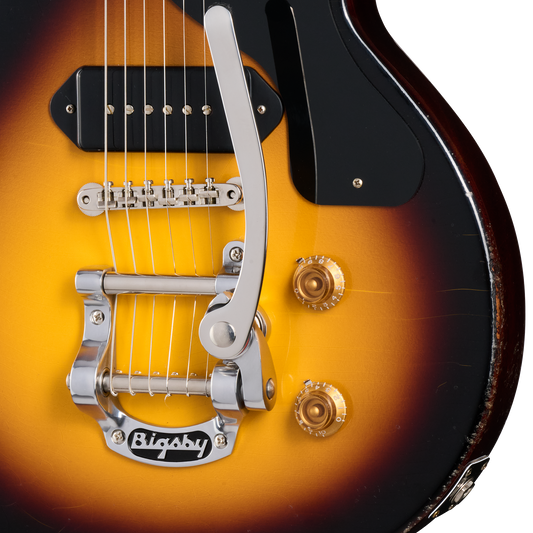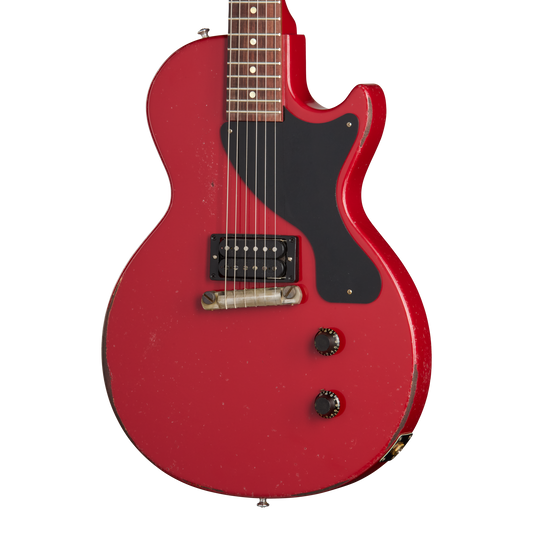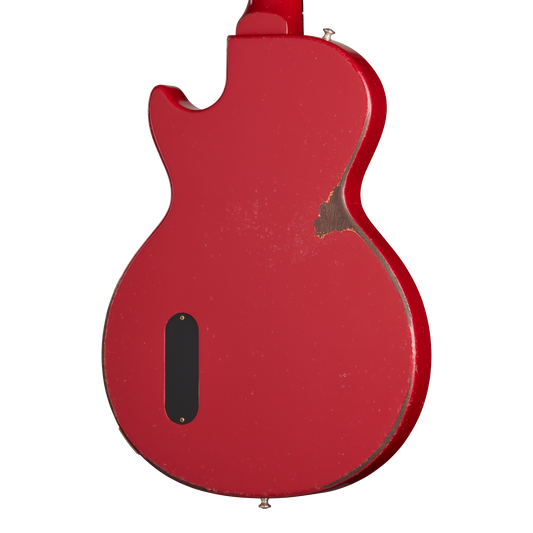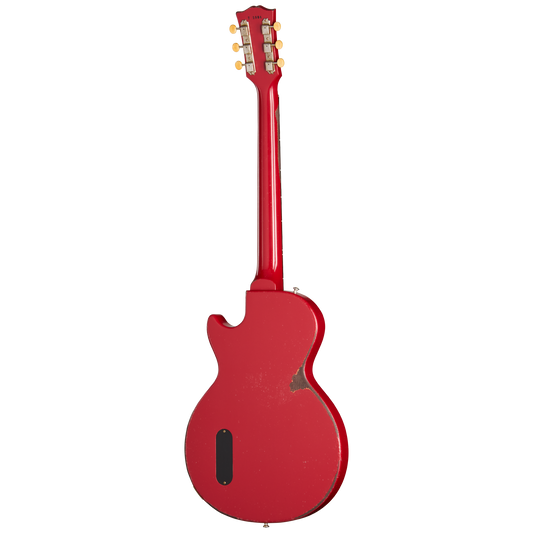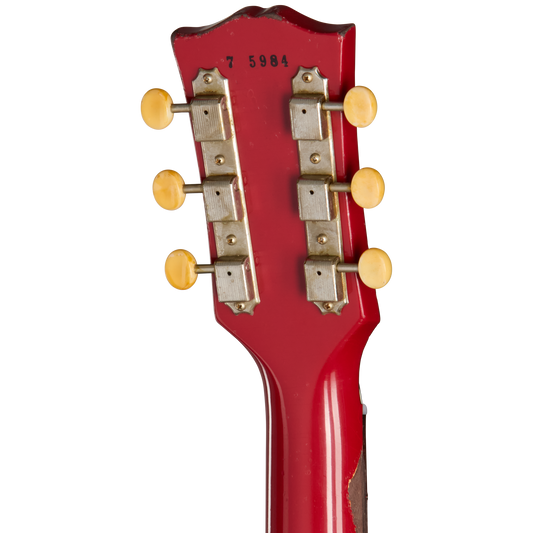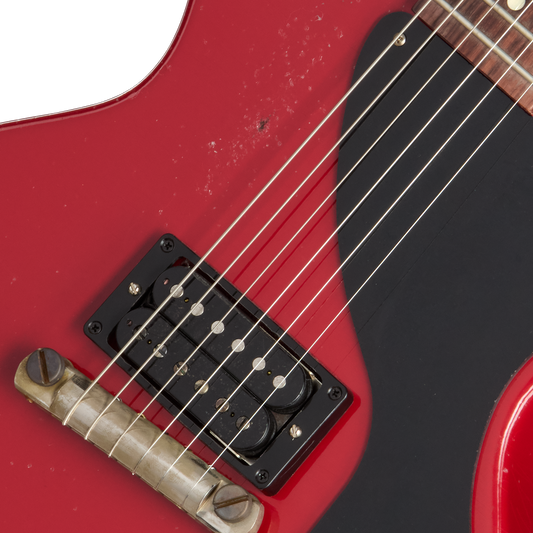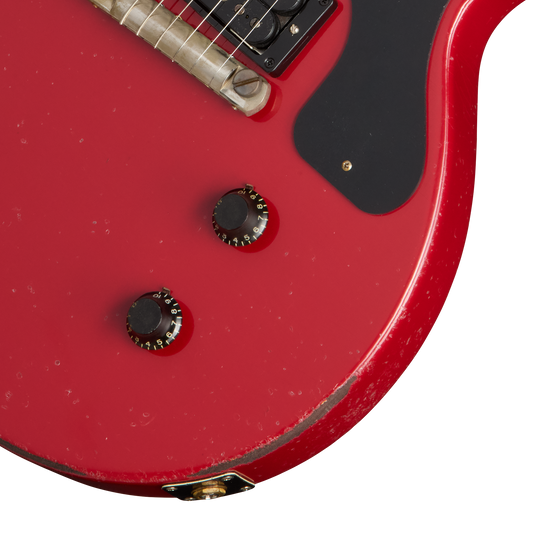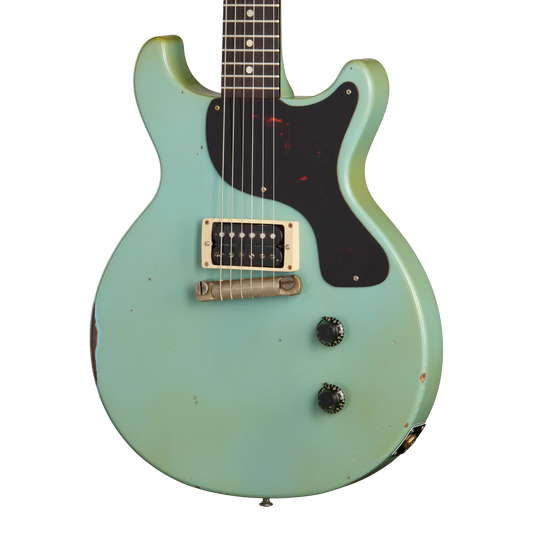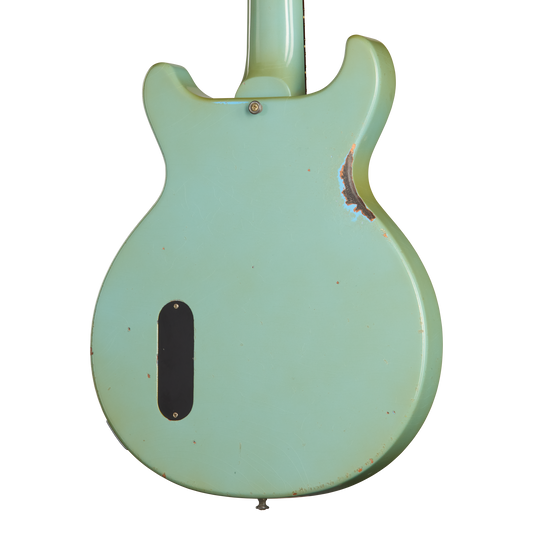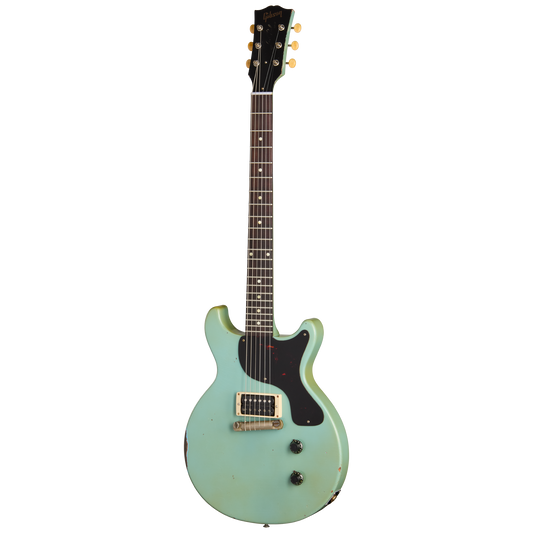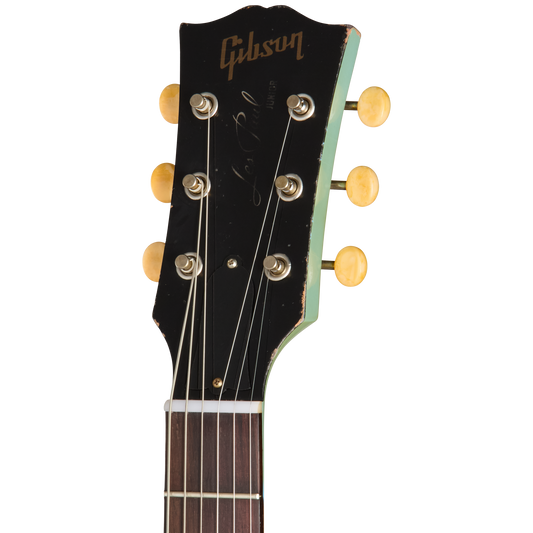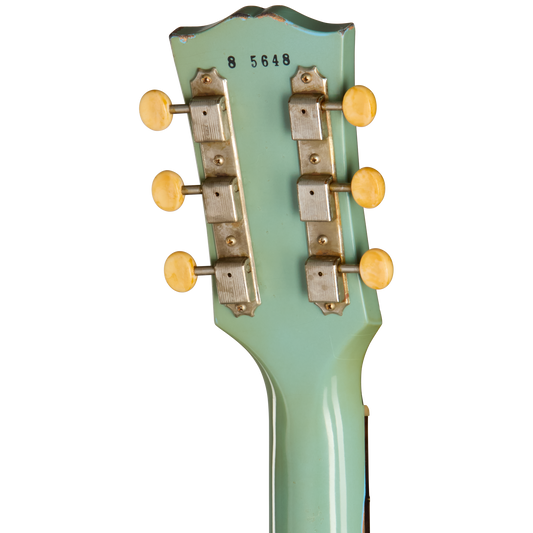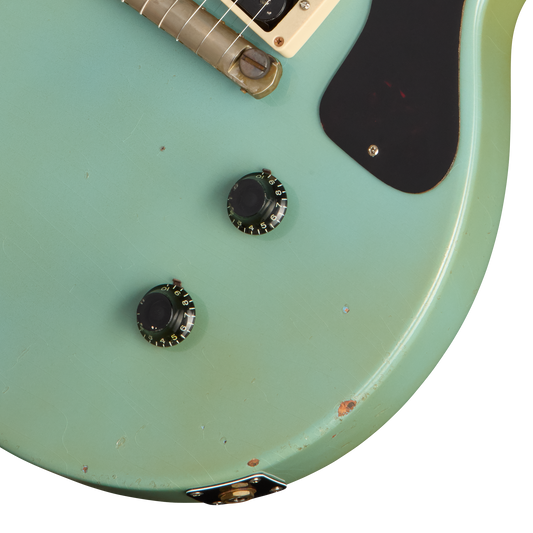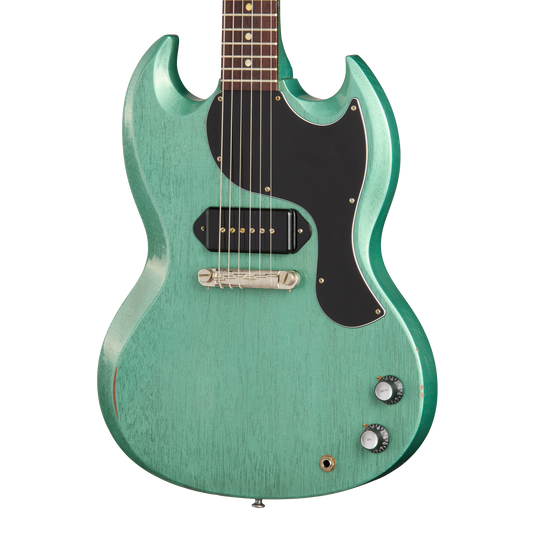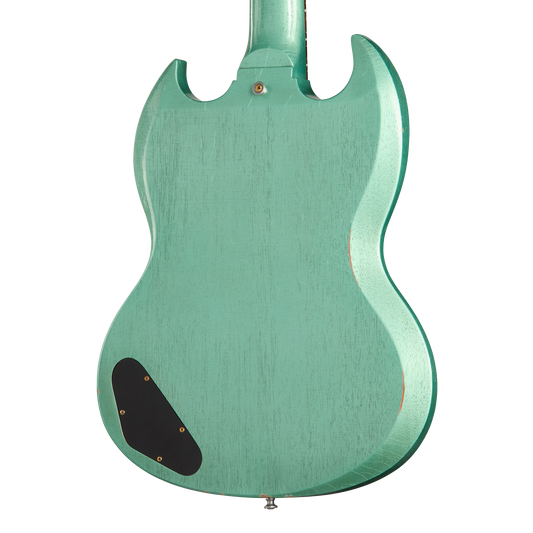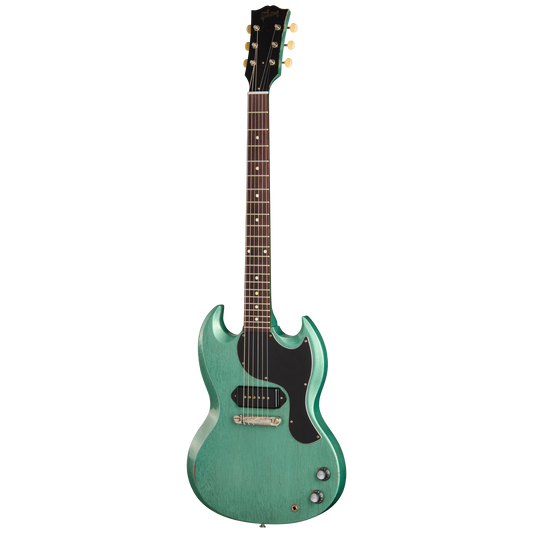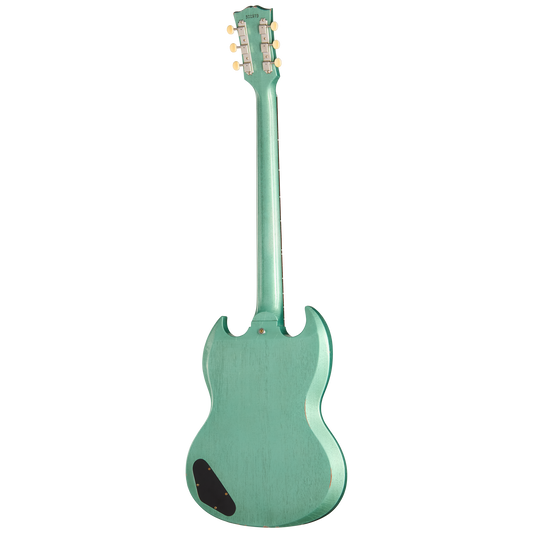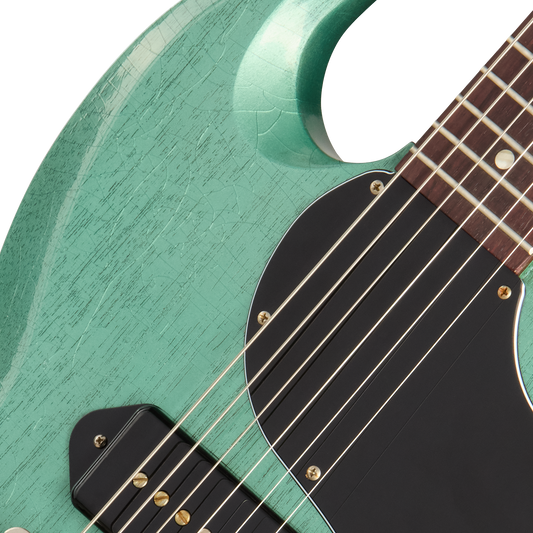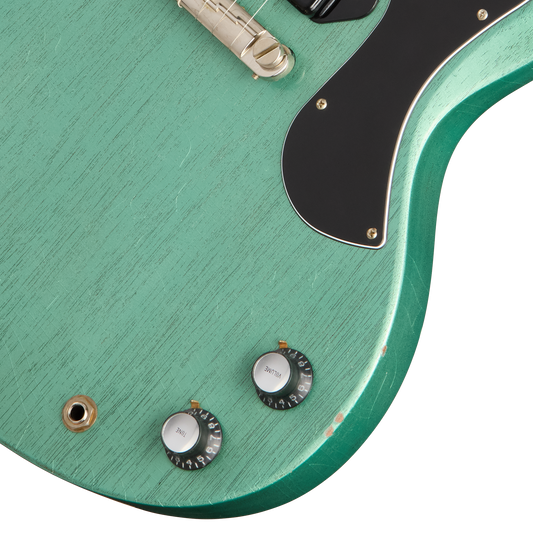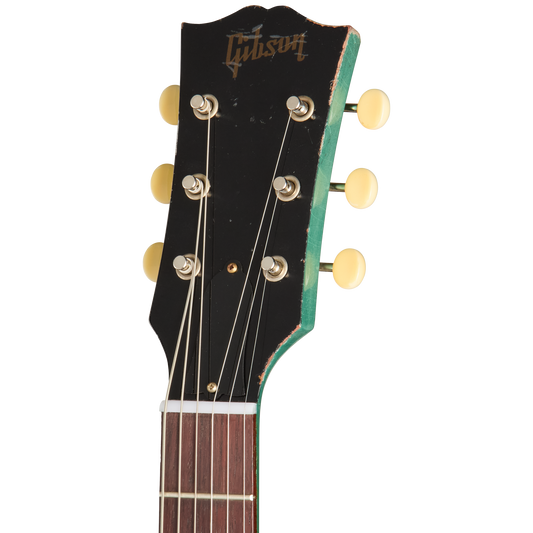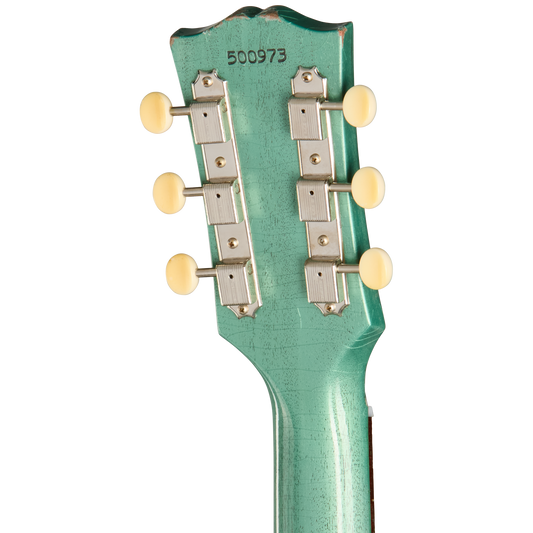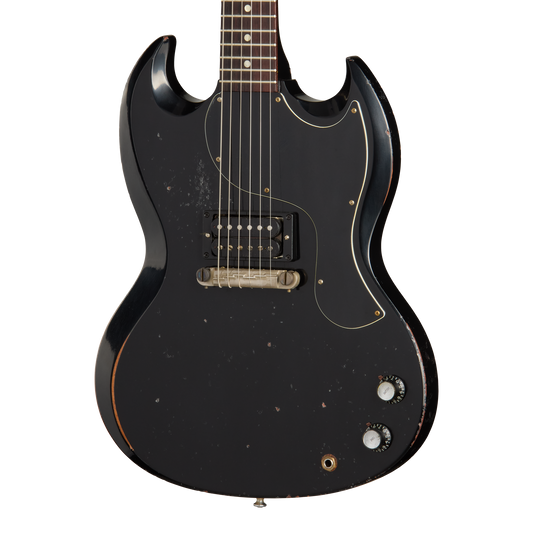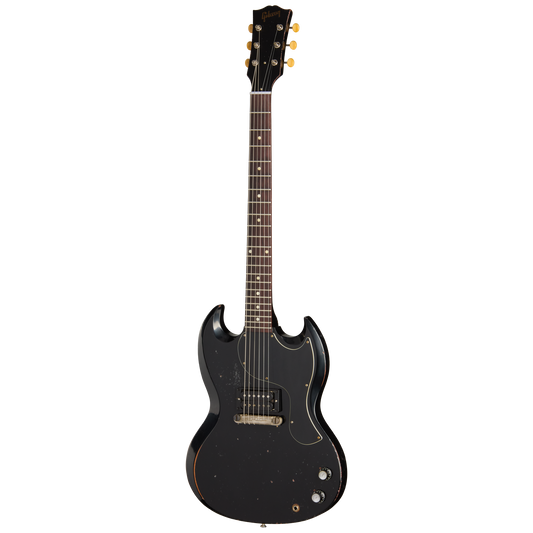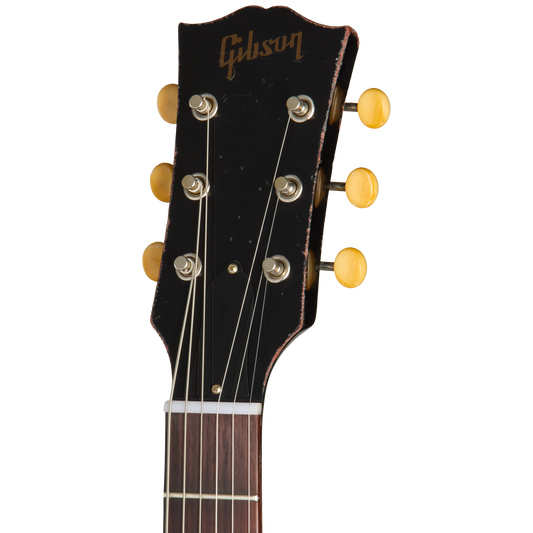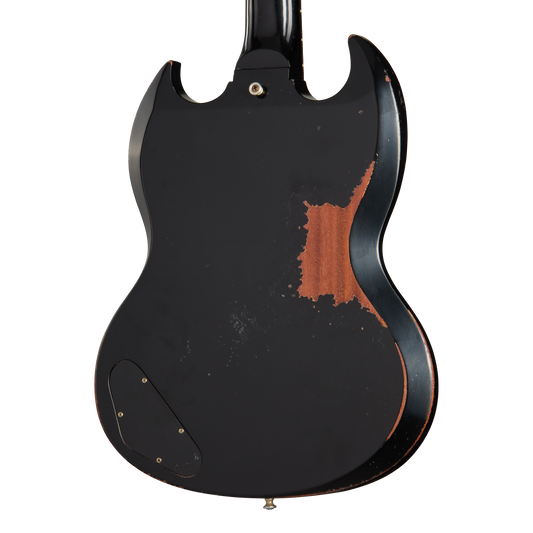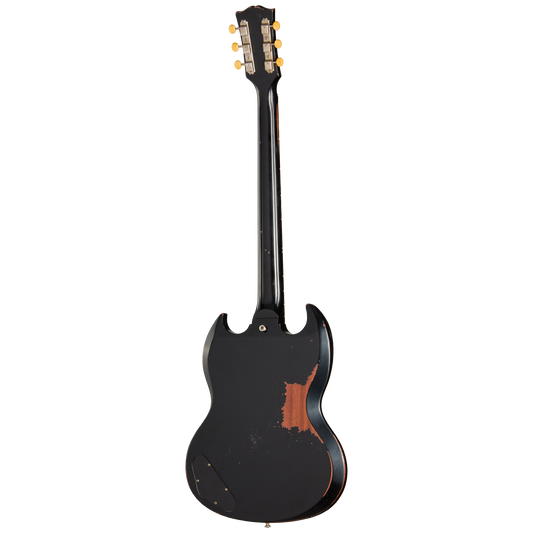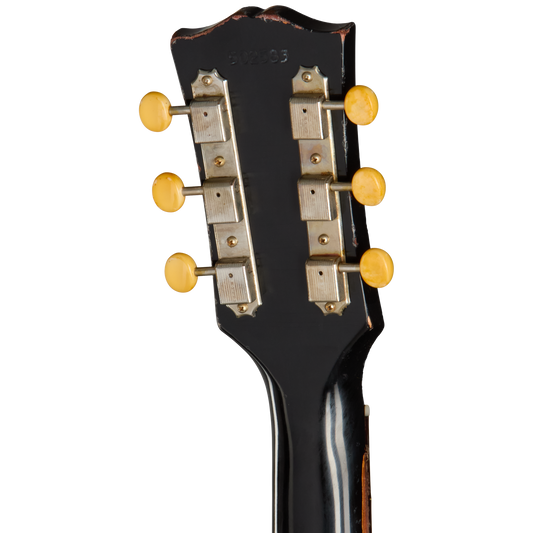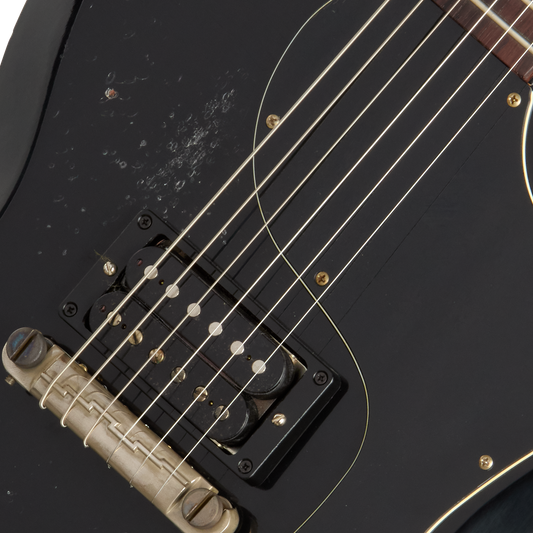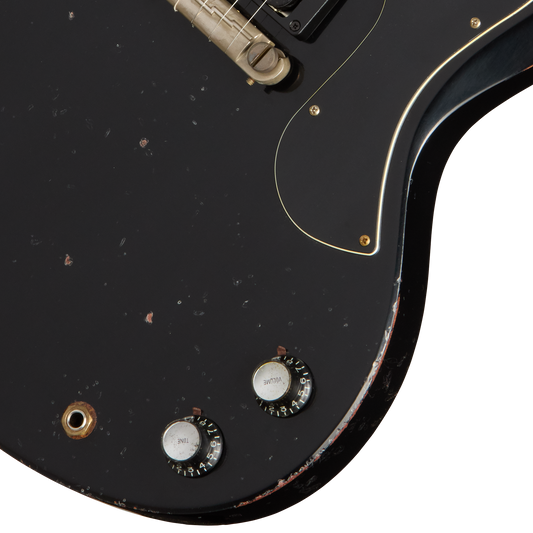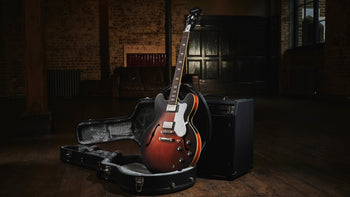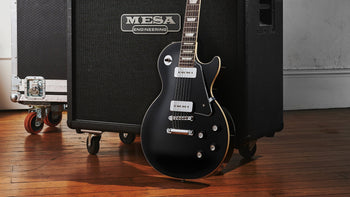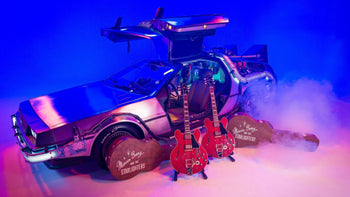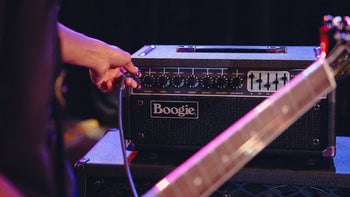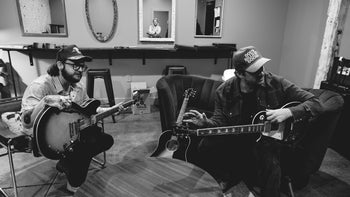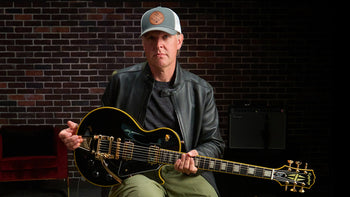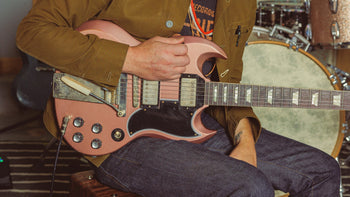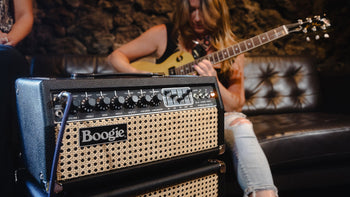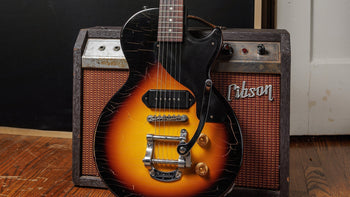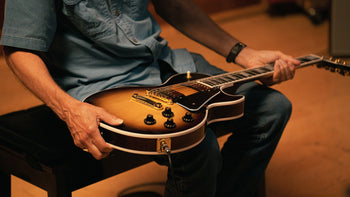In the first of a new Gibson Gazette series, Gibson Editor-in-Chief Chris Vinnicombe gets to grips with one of the coolest new guitars from the Gibson Custom Select program
Before we dive in, here’s an admission: it’s not the first time I’ve extolled the considerable virtues of a great single-pickup electric guitar on the Gibson Gazette, and it certainly won’t be the last. And here’s a spoiler alert: this is a great single-pickup electric guitar.
Born in the Gibson Custom Shop in Nashville, Tennessee, the 1957 Les Paul™ Junior Reissue with Bigsby® is the product of Gibson Custom’s Custom Select program—something of a Skunk Works, where you’ll find Gibson classics reimagined with specification tweaks, exclusive finishes, and other unique features. For instance, have you ever wondered how an ES-345 would sound with a Dogear P-90 in the neck position? Wonder no more. Even for those of us lucky enough to work here, perusing the latest drops from Gibson Custom Select is a potentially wallet-damaging experience. There are just too many achingly cool guitars.
There’s little doubt that this Les Paul Junior is one of the most eye-catching recent releases from Gibson Custom Select—largely because of its Bigsby B5 vibrato, the addition of which embodies the spirit of the Custom Select program. Here’s the thing: 1950s Juniors didn’t come with Bigsbys, but generally speaking, the sort of guitarists who are hip to the appeal of a single Dogear P-90 also tend to be fans of the retro charms of this style of tailpiece. Here, in combination with the ABR-1 Tune-O-Matic™ bridge—another non-standard feature on a vintage Junior—it’s like a chance encounter with a special order from the 1950s, or the discovery of a cool old guitar that was modified by a previous owner along the way.
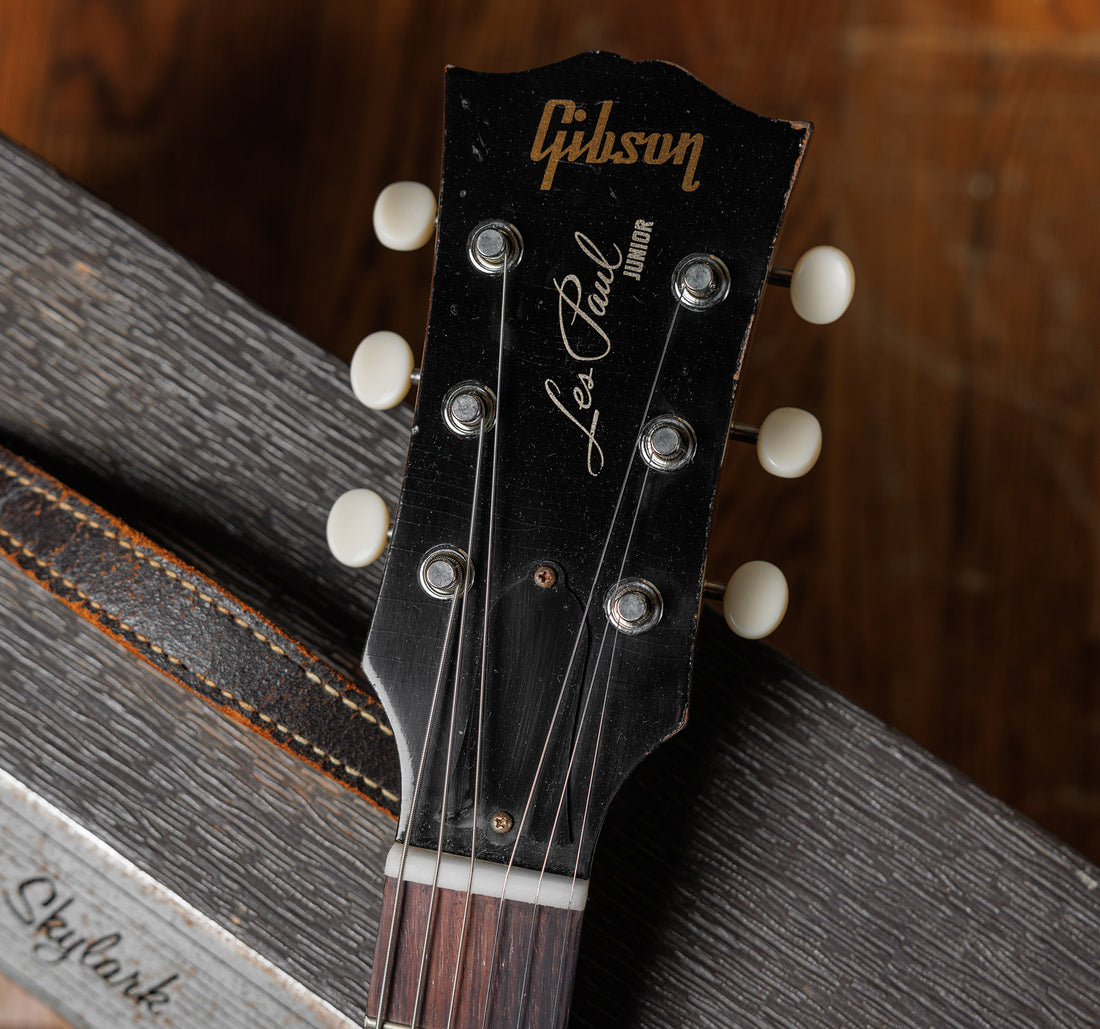
Build and construction
Straight out of the Lifton™ “Gator Skin” case, the old-guitar vibe here is accentuated by Murphy Lab light aging, which includes striking lacquer checking, and wear through to the mahogany on the body edges that come into regular contact with forearms and clothing. There’s checking on the back of the neck too, but the light aging level means the gloss finish isn’t worn through to the wood. Murphy Lab techniques are constantly evolving and now, with further refinements to processes rolled out in 2025 and all individual parts subject to hand-aging, there’s never been a better time to take the plunge. Thanks to the combination of the aging treatment and the modified specs, this might be a new guitar, but it already feels like it has some hair-raising tales from the road baked in.
You can read the full specifications on the product page, but suffice to say, there are no surprises under the paintwork or under the hood. The single-cutaway slab body is solid mahogany, in the traditional style for these “student” guitars, and the solid mahogany neck features a long tenon and is fitted using hide glue. Adornments are few on this simple machine—the unbound rosewood fretboard has celluloid dot inlays and 22 medium-jumbo frets, while the headstock features a silkscreened logo and vintage-style Kluson® strip tuners with white plastic buttons. The single Dogear P-90 is handwired to 500k CTS® audio taper volume and tone pots, complete with a paper-in-oil tone capacitor and a Switchcraft® output jack.
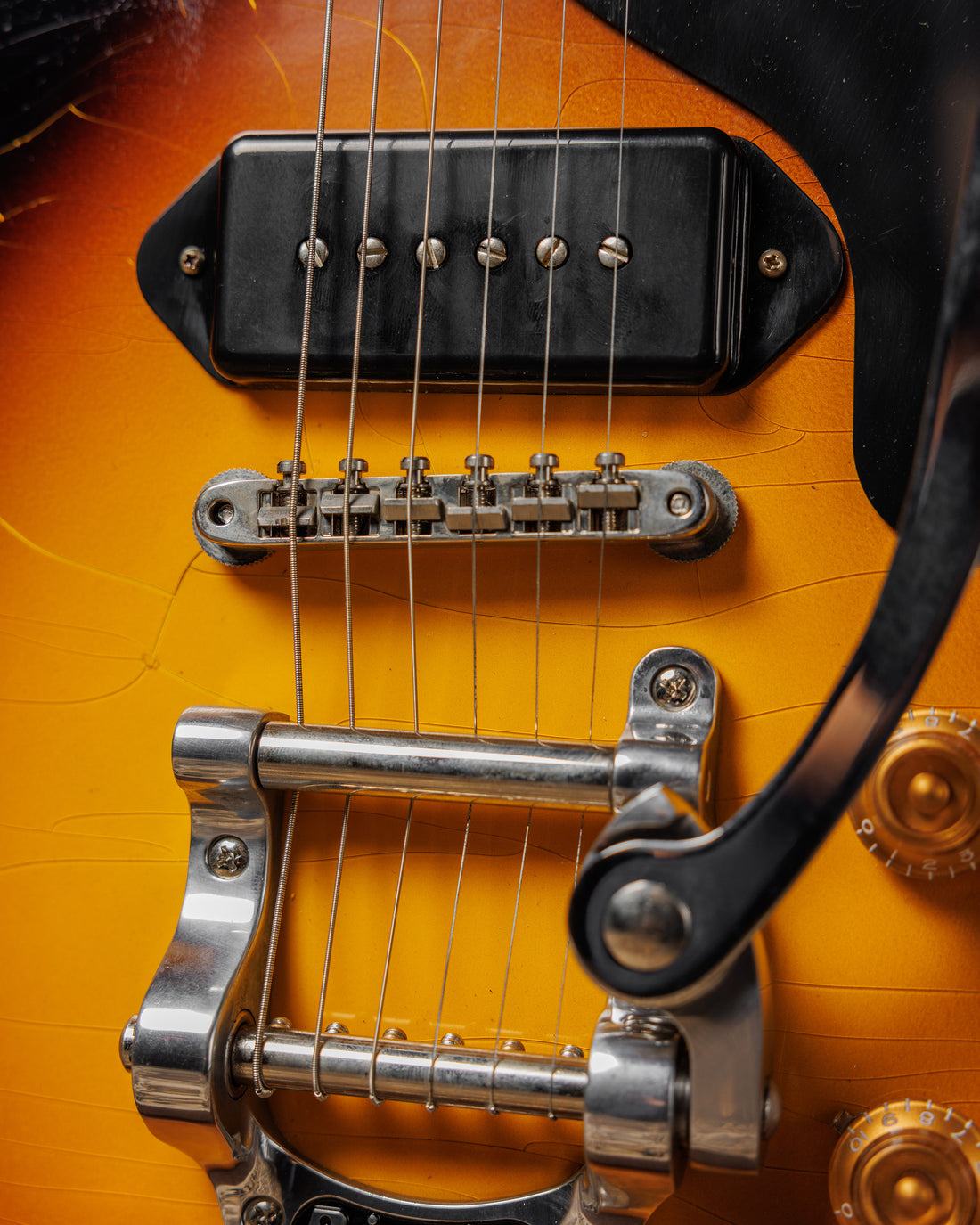
Feel and sounds
The neck is described as a “1950s Chunky D-Shape” and it certainly lives up to its billing, with a depth of approximately 24mm/0.94" at the first fret, fattening slightly to 26mm/1.02" at the 12th. It feels palm-filling and substantial, but not excessively so, and if you enjoy a larger neck profile with relative consistency in the transition from low to high registers, you are in for a treat. In combination with the dot inlays and unbound ’board, there’s a no-frills vibe here that encourages you to plug in and rock. Likewise, our Junior’s weight and balance seem ideal for both stage scenarios and home recording. At 8.6lb, this brawler is fighting in the middleweight category—the extra hardware means there’s no risk of neck dive when strapped on, but it doesn’t add enough weight to make the guitar slide off your leg when playing seated.
Inevitably, some vintage purists will balk at the presence of the Bigsby. A wraptail bridge is regarded by many as an essential ingredient of the Les Paul Junior recipe, and its characteristic sustain and dynamic response are a big part of any stock Junior’s appeal. However, the close proximity of the B5’s tension bar to the Tune-O-Matic bridge means the strings have quite a steep break angle across it, exerting plenty of downward pressure. This translates into a taut and punchy response that retains much of the directness and attitude of a hardtail Junior—only with the addition of the expressive benefits of a whammy bar and the intonation benefits of six fully adjustable saddles.
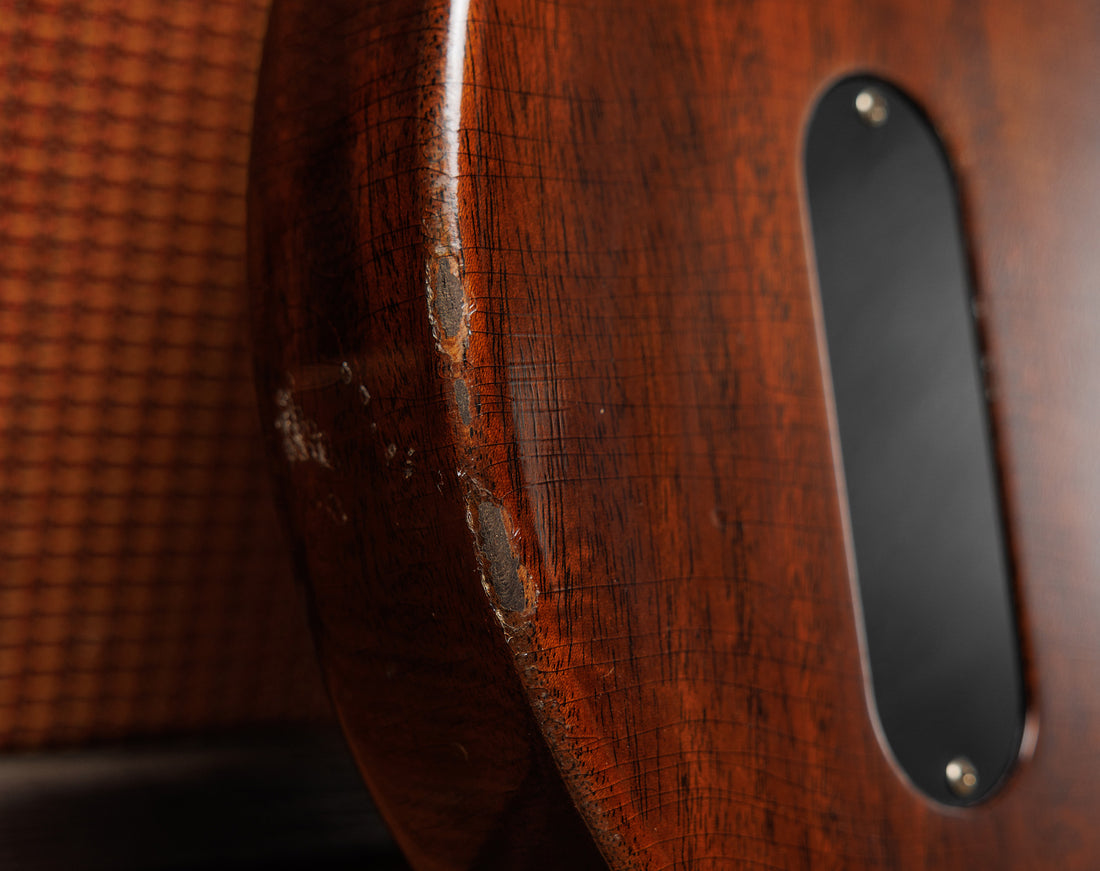
Time to plug in, and I’m soon reminded just how sophisticated these seemingly simple instruments are. The Les Paul Junior might have been conceived in the 1950s as a starter guitar but in the hands of an experienced player, history has proven it to be incredibly versatile. The concept of versatility in guitar gear is somewhat subjective, of course, but I’ve always found that streamlined simplicity has more creative mileage when gigging and recording than guitars and amps bristling with knobs and switches. They have their place, of course, but my needs are usually catered for by small American combos with two or three control knobs and classic American guitars with no more than two pickups—preferably with a vintage-style vibrato unit. Add a splash of reverb and season with tremolo, and I’m all set.
In combination with a small tweed combo, the natural touch-sensitivity and harmonic complexity of the Junior’s Dogear P-90 really comes to the fore. Before you’ve even touched the volume and tone controls, there’s a world of light and shade at your fingertips. Dig in with a pick down by the bridge and it’s wild and raw; play gently with fingers at the end of the fretboard and there’s a fullness and soulful depth to cleaner tones that might surprise you. Neck pickups? You can keep ’em.
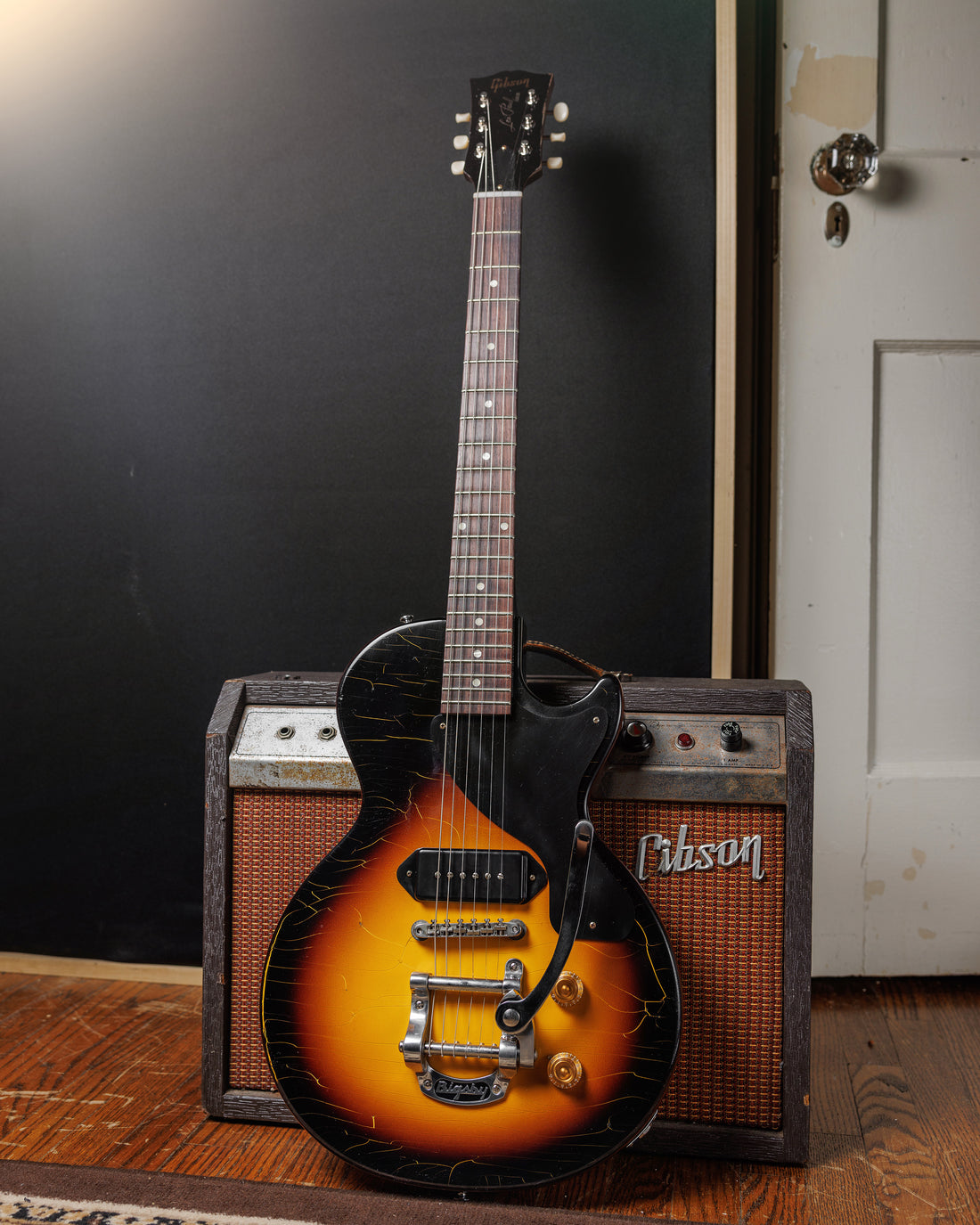
All that said, the tone control really is your secret weapon here. The position of the B5 tailpiece makes it a challenge to check at a glance exactly how the tone is set, but it’s easy enough to ride by ear. Try setting the tone between five and six and start there—it delivers a great core sound for rhythm playing with a “passing lane” on either side. Roll the tone wide open for maximum bite and aggression when that big riff or solo comes around, roll it back to two or three for more laid-back moments and a rounder, smoother voice. All the Les Paul Junior touchstones are here, from Keith Richards to Billie Joe Armstrong, Charlie Starr, and Leslie West, but thanks to the vibrato tailpiece, you can unlock a whole new world of atmospherics, from windswept Western soundtracks to Neil Young-style abandon and beyond. The tuning is rock-solid on our test guitar, too.
As if that wasn’t enough, the volume control also has a major part to play. Even with the test amp set to crunch, you can roll it right back to clean up and hollow out the sound considerably, until it delivers a convincing enough approximation of a J-160E for some early Beatles jangle. Simply crank the volume back up to fast-forward a few years in the Fab Four's catalog—then it’s instant “Paperback Writer.”
Who is it for?
The Gibson Custom Select 1957 Les Paul Junior Reissue with Bigsby is without doubt one of the most fun guitars I’ve encountered in a long time and it has serious “number one” potential as a gigging and recording instrument for indie-rock and Americana players. It’s also testament to the ingenuity of the team behind Gibson Custom Select guitars—do not sleep on these small-batch creations because when they’re gone, they’re gone. If we bring out a version in TV Yellow, I’m in serious trouble.

